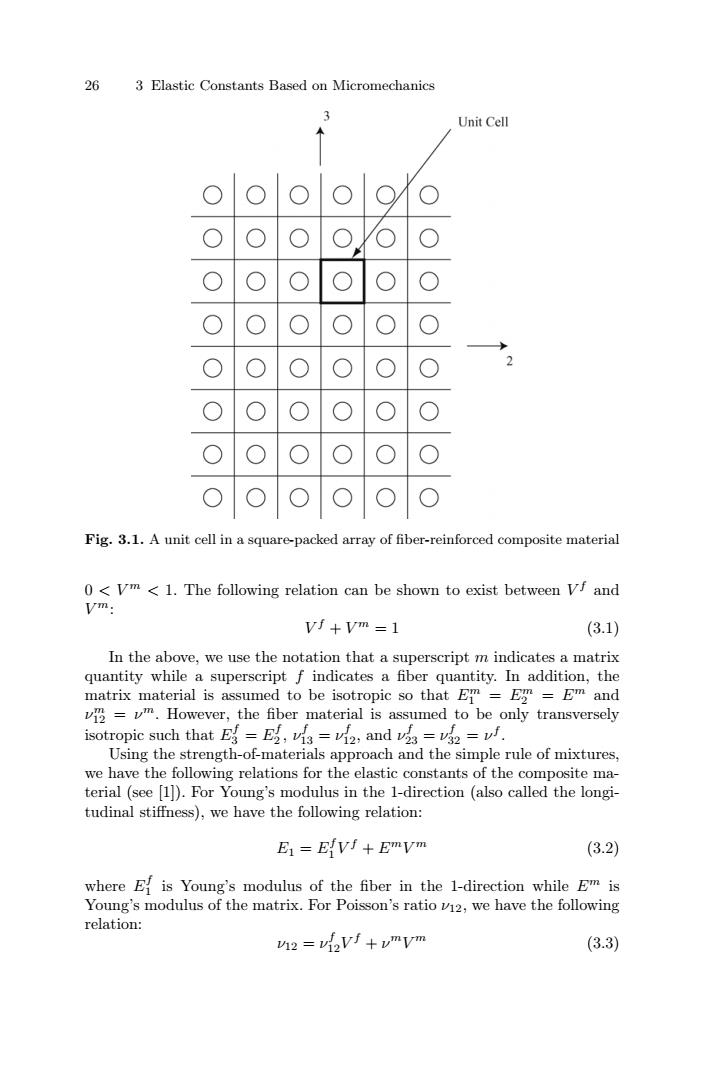正在加载图片...

26 3 Elastic Constants Based on Micromechanics 3 Unit Cell Fig.3.1.A unit cell in a square-packed array of fiber-reinforced composite material 0<Vm<1.The following relation can be shown to exist between Vf and vm: vf+Vm =1 (3.1) In the above,we use the notation that a superscript m indicates a matrix quantity while a superscript f indicates a fiber quantity.In addition,the matrix material is assumed to be isotropic so that Em=E2=Em and v2=".However,the fiber material is assumed to be only transversely isotropic such that E=E2,vis =v12,and vis=vs2 =vf. Using the strength-of-materials approach and the simple rule of mixtures, we have the following relations for the elastic constants of the composite ma- terial (see [1).For Young's modulus in the 1-direction (also called the longi- tudinal stiffness),we have the following relation: E=EV+Emvm (3.2) where Ef is Young's modulus of the fiber in the 1-direction while Em is Young's modulus of the matrix.For Poisson's ratio v12,we have the following relation: h2=v2V时+vmVm (3.3)26 3 Elastic Constants Based on Micromechanics Fig. 3.1. A unit cell in a square-packed array of fiber-reinforced composite material 0 < V m < 1. The following relation can be shown to exist between V f and V m: V f + V m = 1 (3.1) In the above, we use the notation that a superscript m indicates a matrix quantity while a superscript f indicates a fiber quantity. In addition, the matrix material is assumed to be isotropic so that Em 1 = Em 2 = Em and νm 12 = νm. However, the fiber material is assumed to be only transversely isotropic such that Ef 3 = Ef 2 , νf 13 = νf 12, and νf 23 = νf 32 = νf . Using the strength-of-materials approach and the simple rule of mixtures, we have the following relations for the elastic constants of the composite material (see [1]). For Young’s modulus in the 1-direction (also called the longitudinal stiffness), we have the following relation: E1 = Ef 1 V f + EmV m (3.2) where Ef 1 is Young’s modulus of the fiber in the 1-direction while Em is Young’s modulus of the matrix. For Poisson’s ratio ν12, we have the following relation: ν12 = νf 12V f + νmV m (3.3)